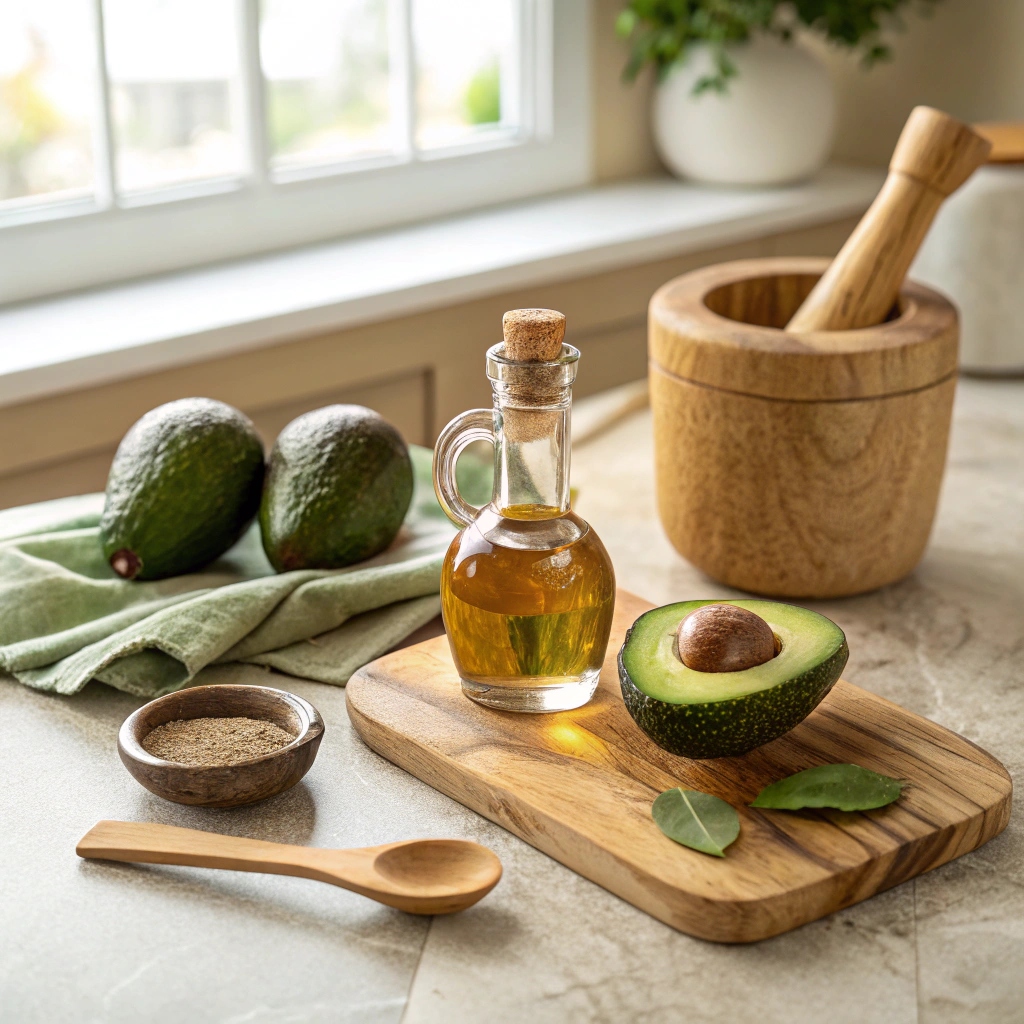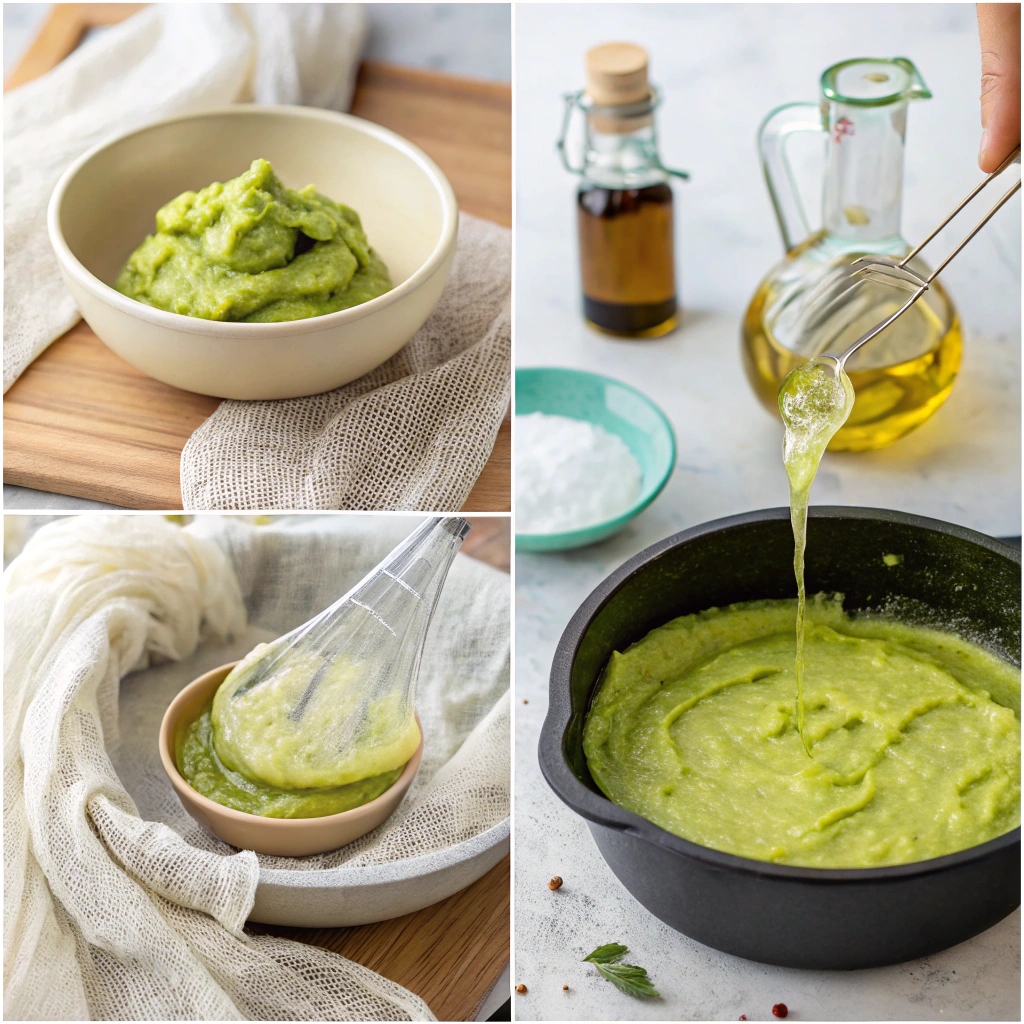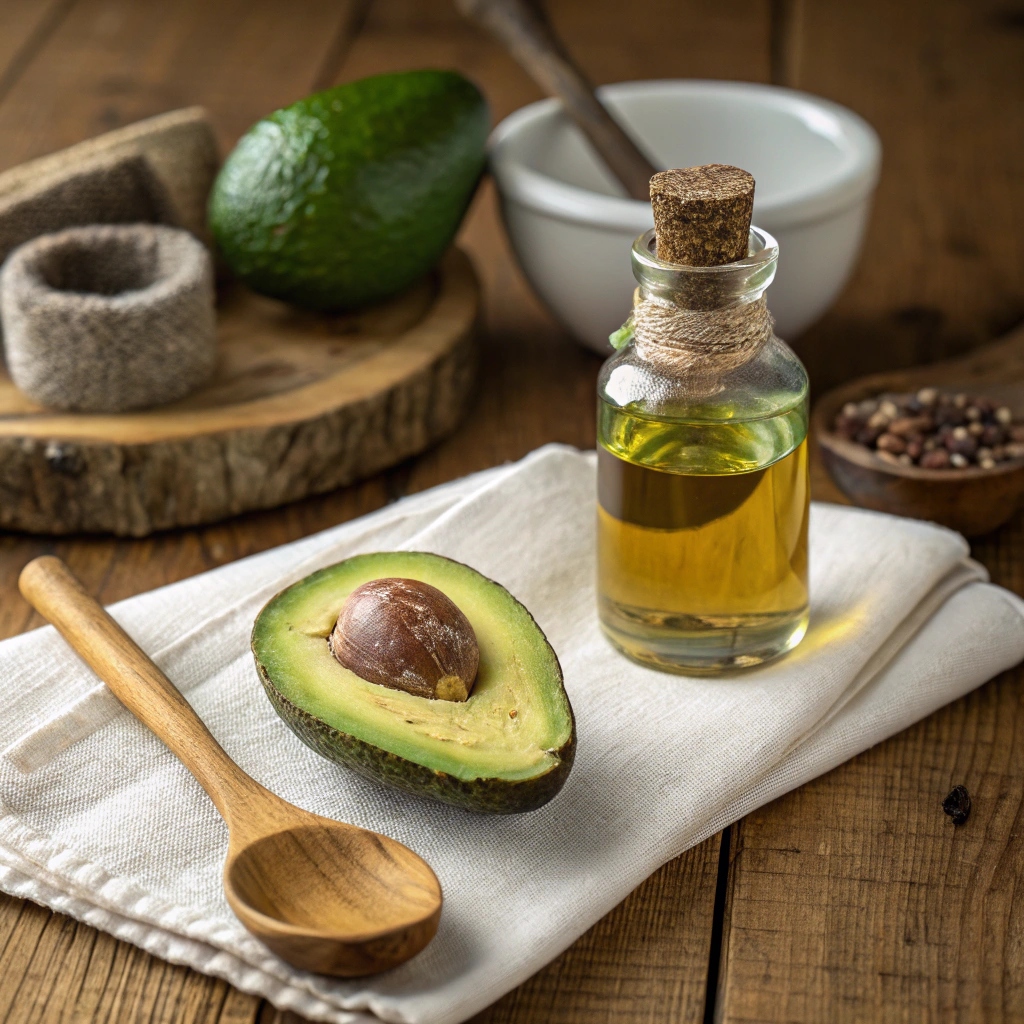Introduction

Avocado oil is a versatile, nutrient-rich oil that can be made at home using simple methods. Whether you’re looking for a natural cooking oil, a moisturizing skincare ingredient, or a nourishing treatment for your hair, homemade avocado oil offers a pure and chemical-free alternative to store-bought versions.
Unlike many commercial oils, homemade avocado oil retains its natural vitamins, antioxidants, and healthy fats, making it an excellent choice for those who prefer a more natural approach to health and beauty. With several extraction methods available, including boiling, blending, and cold-pressing, making avocado oil at home is accessible to anyone, regardless of skill level.
In this guide, we’ll explore the benefits of avocado oil, the different ways to extract it, and practical tips for maximizing its yield and quality. By the end, you’ll have a clear step-by-step method to create your own avocado oil for cooking, skincare, or hair care.
Key Benefits
Avocado oil is packed with essential nutrients, making it a valuable addition to both diet and skincare routines. Here are some of its key benefits:
- Rich in Healthy Fats – Avocado oil is high in monounsaturated fats, which support heart health and help lower bad cholesterol levels.
- Packed with Antioxidants – It contains vitamin E and carotenoids, which help protect the skin from free radical damage.
- Supports Skin and Hair Health – Avocado oil deeply moisturizes and nourishes the skin, reducing dryness and promoting a healthy glow. It also strengthens hair and reduces breakage.
- High Smoke Point – With a high smoke point, avocado oil is perfect for cooking at high temperatures without breaking down into harmful compounds.
- Promotes Wound Healing – Its anti-inflammatory properties can help soothe and repair damaged skin.
- Boosts Nutrient Absorption – Adding avocado oil to meals enhances the absorption of fat-soluble vitamins like A, D, E, and K.
Ingredients

To make avocado oil at home, you’ll need:
- Ripe avocados – Use fresh, fully ripened avocados for the best oil yield.
- Water (for boiling method) – Needed if you opt for the heat extraction process.
- Blender or food processor – For mashing the avocado pulp before extraction.
- Cheesecloth or fine strainer – Used to separate the oil from the pulp.
- Bowl and spoon – For mixing and collecting the oil.
- Glass container or bottle – To store the extracted oil.
Instructions

Method 1: Boiling Method
- Prepare the Avocados – Slice the avocados, remove the pits, and scoop out the flesh. Mash it into a smooth paste.
- Simmer the Avocado Paste – Place the avocado paste in a pot over low heat. Stir continuously until the oil begins to separate.
- Strain the Oil – Use a cheesecloth to extract the oil from the avocado paste. Squeeze out as much oil as possible.
- Store the Oil – Pour the strained oil into a clean glass bottle and store it in a cool, dark place.
Method 2: Blender or Cold-Press Method
- Blend the Avocados – Process ripe avocados in a blender until you get a smooth consistency.
- Extract the Oil Naturally – Place the blended mixture in a cheesecloth and allow it to sit for a few hours. The oil will naturally separate.
- Press and Strain – Gently press the mixture to extract the remaining oil.
- Store the Oil – Transfer to a glass container and keep it in a cool, dark place.
Pro Tips and Variations
- Use Overripe Avocados – They tend to yield more oil.
- Keep the Temperature Low – If using the boiling method, avoid high heat to preserve nutrients.
- Try the Sun-Drying Method – Let the avocado paste dry under the sun, then press out the oil naturally.
- Add Essential Oils – A few drops of lavender or rosemary oil can enhance the benefits for skincare and hair treatments.
- Use an Avocado Oil Press – If available, this method ensures a higher oil yield with minimal effort.
Serving Suggestions
- Cooking: Use avocado oil for frying, sautéing, or as a salad dressing.
- Skincare: Apply a few drops to your face for deep hydration.
- Hair Treatment: Massage into your scalp to promote hair growth and reduce dandruff.
- DIY Beauty Products: Mix with sugar for a homemade exfoliating scrub.
Conclusion
Making avocado oil at home is a simple and rewarding process. Whether you choose the boiling method, cold-pressing, or natural extraction, you’ll have a high-quality oil that can be used for cooking, skincare, or hair care. With its impressive health benefits and versatility, homemade avocado oil is a great addition to any natural lifestyle.
FAQs
How do you extract avocado oil?
Avocado oil can be extracted using various methods, including boiling, blending, cold-pressing, or sun-drying. Each method separates the oil from the avocado pulp, which is then strained and stored.
How much oil can be extracted from an avocado?
On average, one avocado yields about 10–15% of its weight in oil, depending on its ripeness and extraction method. Overripe avocados typically produce more oil.
What is avocado extract used for?
Avocado oil is used in cooking, skincare, hair care, and even medicinal applications. It is known for its moisturizing properties and is often found in cosmetics and natural remedies.
What machine is used to extract avocado oil?
Commercially, an avocado oil press or cold-press machine is used for high-efficiency extraction. At home, a blender, cheesecloth, or manual press can be used for DIY avocado oil.

